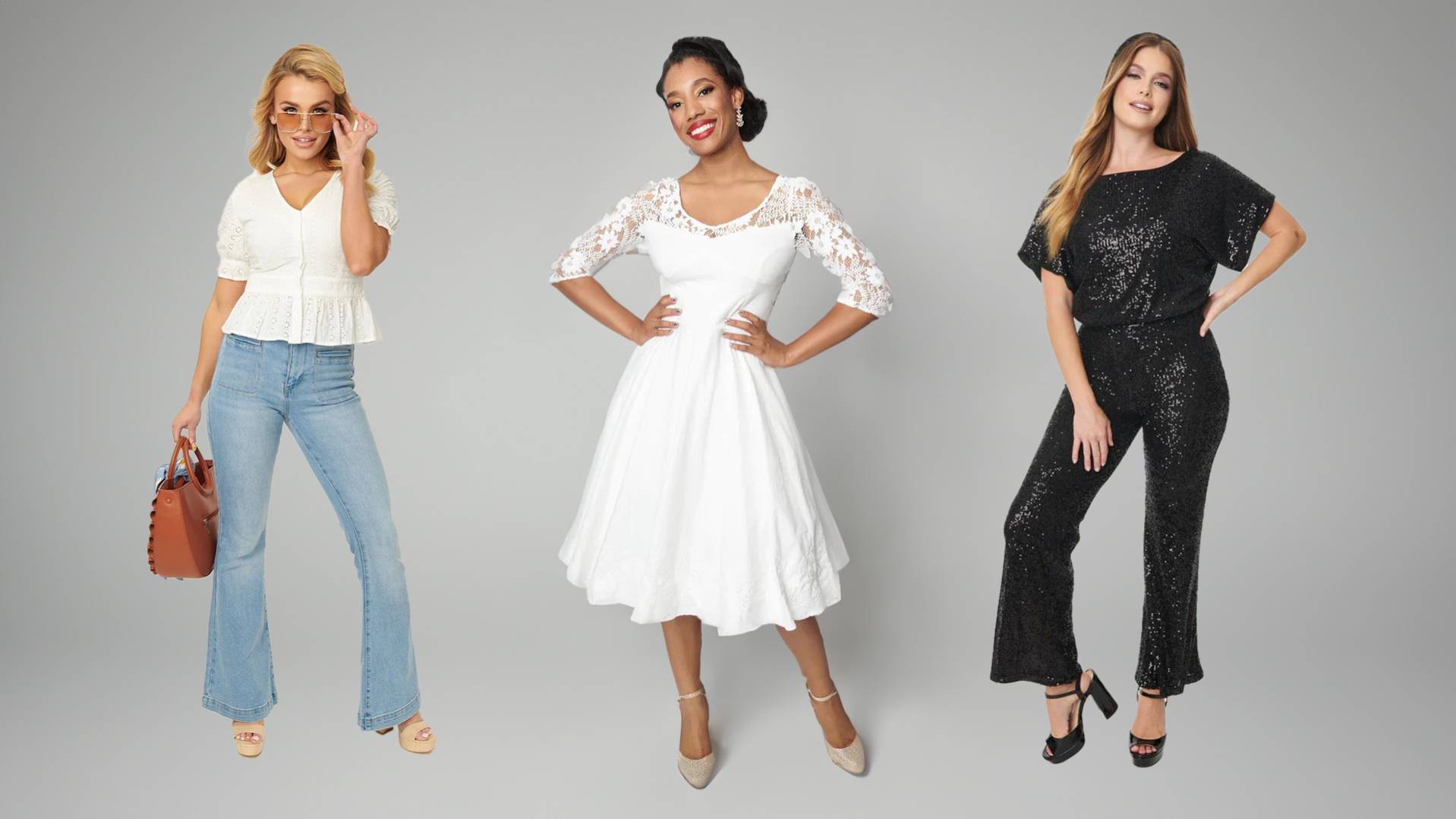The Significance of Sustainable Clothes: Exactly How It Affects the Environment and Your Closet
Lasting apparel is significantly identified for its crucial role in decreasing the environmental influence of the rapid garment industry. By concentrating on environment-friendly materials and honest manufacturing techniques, it attends to pushing ecological worries. This shift not just benefits the planet yet additionally influences customer selections, leading to an extra thoughtful technique to wardrobe management. Comprehending these characteristics increases essential inquiries regarding style's future and individual responsibility in forming it.
The Environmental Impact of Quick Fashion

Advantages of Lasting Products
Sustainable materials use considerable benefits, specifically through environment-friendly textile options that reduce environmental damage. These materials likewise demonstrate durability and durability, lowering the demand for regular substitutes. As a result, they add to an extra lasting garment industry and advertise responsible customer behavior.
Eco-Friendly Material Selections
While the garment industry has actually long been connected with rapid patterns and environmental injury, the increase of environment-friendly fabric choices provides a transformative opportunity. Lasting materials such as natural cotton, hemp, and Tencel have gained appeal as a result of their reduced eco-friendly impact. These textiles are typically produced without unsafe pesticides and call for less water, decreasing their carbon impact - Branded Clothing. In addition, several green materials are biodegradable, adding to a round economic climate by reducing waste. Choosing lasting products not only supports eco responsible practices however additionally promotes healthier ecological communities. As consumers end up being extra knowledgeable about their purchasing power, the demand for green textiles encourages brands to innovate and embrace more sustainable production techniques, eventually profiting the earth and future generations
Toughness and Long Life Advantages
Several customers are significantly recognizing the sturdiness and durability advantages of lasting products in their clothing selections. Unlike conventional textiles, lasting materials such as natural cotton, hemp, and recycled polyester are crafted to endure wear and tear, leading to garments that last longer. This decreased regularity of substitute not only conserves customers cash in time but additionally reduces waste generated by quick fashion. On top of that, sustainable clothes commonly uses green manufacturing techniques that enhance fabric toughness, adding to a decrease in the general carbon impact. By investing in durable clothing, consumers can cultivate a more lasting closet while appreciating top notch items that preserve their aesthetic and functionality over time. Longevity and long life stand as crucial benefits of selecting sustainable products.
Minimizing Waste Through Sustainable Practices
Lowering waste in the garment industry can be attained with innovative practices such as upcycling and repurposing products. Furthermore, taking on minimal wardrobe approaches urges customers to prioritize top quality over quantity, inevitably reducing clothing intake. With each other, these techniques contribute significantly to an extra sustainable apparel version.
Upcycling and Repurposing Materials
Upcycling and repurposing products have become innovative methods in the fashion industry, changing disposed of fabrics into beneficial new items. This method not just lessens waste but also motivates creativity and uniqueness in clothing style. By taking old garments and materials, designers can create distinct pieces that mirror individual style while decreasing the need for brand-new resources. In addition, upcycling commonly requires much less power and water contrasted to traditional manufacturing processes, considerably reducing the environmental impact of style. As consumers become more knowledgeable about sustainability, the appeal of upcycled clothes continues to increase, advertising a circular economic climate. Eventually, these techniques add to a much more lasting future, where style focuses on ecological health over fast production and usage.

Minimal Closet Strategies
As individuals progressively seek to decrease their ecological impact, taking on minimal closet methods has actually gotten traction as an efficient method to lasting style. These methods stress high quality over quantity, encouraging consumers to curate a smaller collection of versatile, durable apparel. By concentrating on ageless pieces that can be mixed and matched, individuals can lower the regularity of acquisitions and ultimately decrease waste.Additionally, minimalism promotes conscious intake, prompting shoppers to show on the ecological and honest implications of their choices. This method not only fosters an extra lasting way of life yet additionally streamlines day-to-day decision-making concerning outfit. As people accept minimal concepts, they add to a fashion society that values sustainability and liable consumerism, ultimately resulting in an extra eco-conscious society.
The Role of Ethical Labor in Lasting Fashion
While numerous consumers are progressively familiar with the ecological consequences of their apparel selections, the importance of moral labor practices in lasting fashion can not be ignored. Ethical labor incorporates fair earnings, safe working problems, and regard for employees' rights, forming the foundation of responsible fashion manufacturing. Brands that prioritize moral labor not just boost areas yet likewise set a criterion for responsibility in the industry.Moreover, the combination of honest methods fosters openness, enabling customers to make enlightened selections concerning their purchases. This method contrasts dramatically with quick fashion's exploitative labor versions, which frequently focus on earnings over individuals. By sustaining firms committed to honest labor, customers add to a system that values human self-respect alongside environmental sustainability. Ethical labor is not just an add-on; it is essential to the broader goal of sustainable fashion, making sure that the pursuit for eco-friendliness does not come at the expenditure of human civil liberties.
The Influence of Sustainable Clothes on Carbon Emissions
Sustainable clothing has the potential to greatly reduce carbon exhausts connected with the fashion business. Standard garment production contributes especially to greenhouse gas discharges, mainly due to energy-intensive production processes and the usage of non-renewable resources. important site In contrast, lasting fashion focuses on environmentally friendly materials, such as natural cotton or recycled fibers, which usually call for much less energy to produce.Moreover, lasting brand names tend to take on a lot more effective manufacturing techniques, lessening waste and decreasing overall exhausts. By prioritizing resilience and classic design, lasting garments urges consumers to get less regularly, further lowering the carbon footprint connected with overconsumption.Additionally, lots of sustainable brand names are dedicated to openness in their supply chains, allowing customers to make educated selections that line up with their worths. Ultimately, changing towards lasting clothing can cause a significant decrease in carbon emissions, adding to a healthier world and an extra sustainable future for the garment industry.
Sustaining Regional Economic Climates With Sustainable Choices
The shift toward sustainable clothing not only addresses environmental problems but additionally significantly benefits regional economic climates. By selecting lasting fashion, consumers commonly support tiny companies and regional artisans, improving neighborhood strength. These ventures usually run on a smaller scale, prioritizing workmanship and honest methods over mass production.Investing in locally made lasting garments promotes work creation and stimulates economic development within areas. As customers get redirected here come to be a lot more familiar with the ecological influence of their purchases, they progressively seek items that mirror their worths. This demand encourages neighborhood suppliers to take on lasting methods, adding to a circular economy.Moreover, supporting neighborhood businesses reduces transportation emissions, aligning with eco-conscious consumer behavior. The interconnectedness of sustainable clothing and neighborhood economies underscores the important role that individual selections play in advertising both economic and ecological health and wellness. By promoting these local links, areas can prosper while additionally working towards a much more sustainable future.
Changing Your Storage Room: Tips for a Lasting Wardrobe
As individuals look for to decrease their ecological effect, changing a wardrobe into a lasting wardrobe becomes an important action. One efficient technique is to examine existing clothes, maintaining only products that are worn routinely which align with sustainability objectives. Prioritizing top quality over quantity is crucial; buying sturdy pieces from environment-friendly brands can substantially lower waste.Additionally, including pre-owned things can breathe brand-new life into a closet while decreasing environmental damages. Organizing garments swaps with close friends or contributing unused products can even more advertise sustainability.When shopping, people should look for materials that are natural, recycled, or eco-friendly, and stay clear of quick fashion sellers - Branded Clothing. Ultimately, exercising mindful usage by thoughtfully thinking about each acquisition can add to a much more sustainable way of living. By implementing these suggestions, one can create a wardrobe that reflects personal style while supporting ecological stewardship
Regularly Asked Questions
How Can I Identify Sustainable Clothing Brands?
To identify sustainable clothes brands, one ought to research materials utilized, examine click for more for certifications like Fair Trade, and analyze the brand's transparency about their production processes, labor practices, and ecological influence, making sure moral and eco-friendly practices are focused on.
What Are the Expenses Related To Lasting Fashion?
The prices linked with sustainable fashion can vary considerably. Greater manufacturing costs, ethical sourcing, and environment-friendly materials typically result in increased market prices, which might discourage some consumers while interesting ecologically conscious shoppers.
Can Lasting Clothes Be Stylish and Fashionable?
Lasting clothes can undoubtedly be elegant and trendy. Developers progressively prioritize ingenious materials and honest production techniques, proving that fashion and sustainability can exist together. Consumers now have varied options that blend aesthetics with ecological consciousness.
Just How Does Washing Clothing Affect Their Sustainability?
Cleaning clothes substantially effects sustainability by consuming water and power, contributing to air pollution, and triggering microplastic launch. Frequent washing can weaken fabrics, shortening their life-span and enhancing the demand for replacements, eventually exacerbating environmental concerns.
What Is the Life-span of Lasting Clothes Compared to Rapid Fashion?
The life expectancy of lasting clothing commonly surpasses that of quick fashion items, often long-term several years because of top quality materials and workmanship. On the other hand, fast style garments may break down quickly, demanding more constant replacements. Sustainable garments is increasingly identified for its essential duty in reducing the environmental effect of the rapid style industry. While numerous consumers are increasingly aware of the environmental consequences of their apparel selections, the importance of ethical labor methods in sustainable fashion can not be ignored. Branded Clothing. Lasting apparel has the possible to greatly decrease carbon exhausts associated with the style sector. In comparison, lasting style focuses on environmentally friendly materials, such as organic cotton or recycled fibers, which frequently require less power to produce.Moreover, lasting brands tend to take on extra effective manufacturing practices, minimizing waste and lowering overall exhausts. By focusing on sturdiness and timeless style, sustainable clothes motivates consumers to buy less regularly, more minimizing the carbon footprint linked with overconsumption.Additionally, lots of sustainable brand names are devoted to transparency in their supply chains, allowing consumers to make informed choices that align with their worths